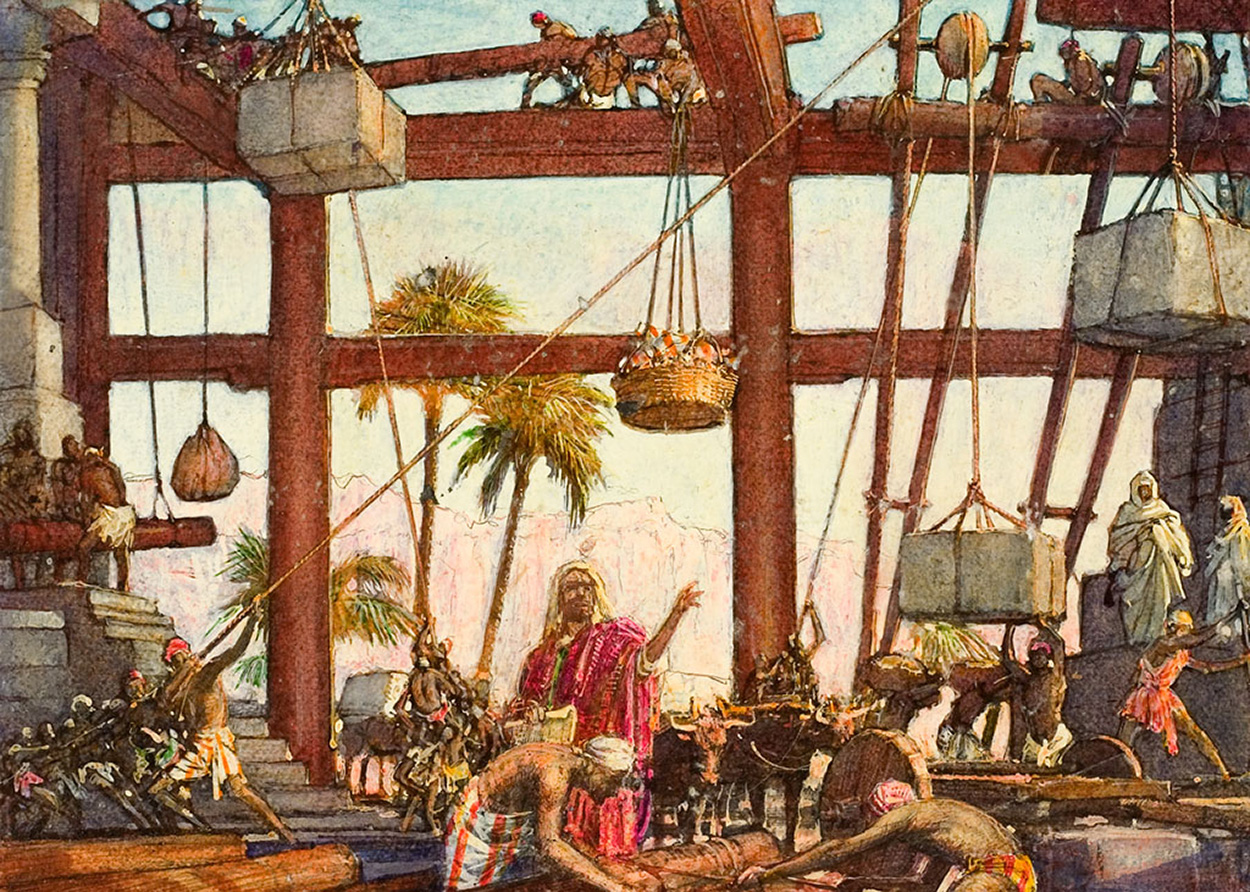Before continuing, Ahkman offers a little personal chronology, saying he's been a servant of the Lord for 21 years and high priest for 8. I take this to mean his conversion or baptism was 21 years prior, and that Suran died 8 years previous. While Ahkman was ordained to be high priest before his father's death, Suran served in that capacity through the end of his life.
As part of his teachings to the people, Ahkman reviews the ten commandments Moses received from the hand of God. There are some interesting tidbits and insights within his paraphrase of the commandments that are worth noting:
1) Don't worship any other gods than the Lord God. This was definitely pertinent to Suran's people who were converting from animistic, polytheistic, etc. belief systems.
2) Don't make any graven (i.e., carved) image or create any image of things in heaven, earth, or water, and don't bow down to worship them. While most followers of this commandment interpret this as a prohibition against creating idols to worship, even in Ahkman's reading, there is an opening for stricter alternative interpretations, like Islamic aniconism, which prohibit the depiction of any of God's creations.
3) Don't take upon you the name of the Lord in vain, for doing that which isn't of the Lord in His name is a lie and dishonors Him in the eyes of men, and those who do such won't be held guiltless. This is an interesting spin on this commandment. Most interpretations describe this as guiding one's language, esp. in oath-making or in keeping promises. However, here it alludes to one's covenant relationship with the Lord, esp. in taking the name of the Lord upon oneself in baptism and other sacred ordinances, and that un-Christlike behavior of disciples of Christ or performing acts without express consent and authority from God directly violates this commandment. It would seem to be a much more expansive and serious commandment than many realize.
4) Remember the Sabbath day, for we're given to labor six days, but on the seventh day, we take our rest and don't perform any work, for this day is given of the Lord to man that we might be relieved of the hardships we must endure. As Jesus said, "Sabbath was made for man, not man for the Sabbath."
5) Honor your fathers and mothers, for when you bring honor to them, you bring honor to all generations of your people. I like this image of honoring generations of your ancestors along your family line, or chain, or tree. It strengthens familial bonds, requires us to explore our family history, and even helps us practice charity.
6) Don't kill, for it's not given to destroy things God created. This perspective also lends itself to the broader interpretation of not taking the life of
any living thing, instead of being more narrowly focused on the murder of humans. While living beings procreate, they are not creators in the same way as God. And what has God created? Everything -- the earth and all living things. (And even the earth is a living thing according to LDS theology.) God has power of creation and destruction, over life and death; those are not man's to take unto himself.
7) Don't commit adultery, meaning sexual relations with someone who is given by God to another. (This process of being "given by God" will be discussed later in Ahkman 18 and beyond.) It is interesting that Ahkman distinguishes adultery from what is often termed fornication or premarital sex. It doesn't say how dealing with that transgression would be approached, or even how serious a sin it was perceived to be.
Another interesting note is that if a woman is anointed a Holy Woman she can be given to more than one man. Speculation on the interpretation of this phrase can run far and wide, and this brings up more questions than answers. This title, Holy Woman, is only mentioned again in Angulu 8 & 15. In the latter, the resurrected Jesus teaches of divorce and says that unless a divorce is the result of adultery/fornication or the wife is a Holy Woman, she and her next spouse will be guilty of adultery. So, one who is anointed as a Holy Woman can be lawfully married to more than one man. Is this simply describing serial monogamy, or does this leave the door open for polyandry, too? (Polygyny/polygamy will be instituted among Suran's people beginning in Ahkman 18.)
In Angulu 8, Holy Woman is also used as a title for Mary, the mother of Jesus, by the wise men, but the angel Gabriel also says she will be "anointed as a Holy Woman" to conceive and bear the Son of God. This seems to be more than just a title. This process, calling, ordinance, or whatever sanctioned and legitimized Mary to lawfully bear the Son of God while also being legally married to Joseph. Either way, interesting stuff.
8) Don't steal because it's not good to take the someone else's property. 'Nuff said.
9) Don't bear false witness against your neighbor. Simple enough.
10) Don't covet your neighbor's property, but be content with what the Lord has given you. I like the flipside of that coveting coin -- being content with what you have. Everything we have, even (or esp.) our very lives, comes from God. Everything we think we "possess" is God's, which He has lent to us. He blesses us beyond measure and often beyond what we deserve (see King Benjamin's speech and Jesus' Sermon on the Mount).
Ang Aklatan


























